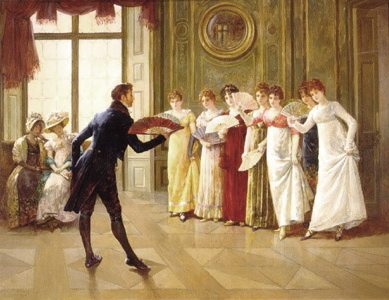Many books out there have some elements of romance in them, but those that are filed under the Romance category revolve around the development of a relationship between two people. Readers of romance expect a few things from them:
· The hero and heroine will have a happily ever after. If they do not, the work would be better categorized under something different. Women’s Fiction if the primary narrative is from the female point of view.
· There will be some kind of obstacle for the hero and heroine to overcome. Obstacles present a reason the characters should fight to be together and make the resolution of the relationship satisfying.
Considering that almost every genre can have
“Romance” tacked to the end and made a sub-genre (for example: Paranormal Romance, Fantasy Romance, Historical Romance,
to name a few), the list of sub-genres would be infinite. For the purposes of
this categorization, we’ll focus on the major romance sub-genres, listed in
alphabetical order.
CONTEMPORARY –
Contemporary romances take place in the time period they were written in. The
plot development can be dramatic or light-hearted. Chick-Lit and Romantic Comedy
fall under this sub-genre. Notable mainstream authors include Nora Roberts and
Danielle Steel.
LDS Contemporary Romance – The characters’ relationship develops and often revolves around LDS culture. Notable authors include Rachel Ann Nunes, Anita Stansfield, Krista Lynne Jensen, and Melanie Jacobsen among many others.
LDS Contemporary Romance – The characters’ relationship develops and often revolves around LDS culture. Notable authors include Rachel Ann Nunes, Anita Stansfield, Krista Lynne Jensen, and Melanie Jacobsen among many others.
EROTIC ROMANCE – The basic elements of romance remain the same, however plot lines and character development revolve around the sexual relationship between the main characters and the book contains sexually explicit scenes. It can include elements from all sub-genres of romance. Notable authors in this category include E.L. James and Tiffany Reisz.
GOTHIC ROMANCE – Romances in this category have an element of mystery and horror that affect the plot and character development. It is not as popular a category as it has been in times past. Notable authors include Victoria Holt.
HISTORICAL ROMANCE – Depending
upon the publisher, most often Historical Romance is defined as a romance
taking place during or prior to World War II, however many definitions stretch
to include anything up to the 1970s. The historical setting should not be
simply a back-drop to the novel. Events of the time period should play
intricate roles in the novel’s plot and the characters’ development. Notable historical romance authors include Elizabeth Hoyt and Phillipa Gregory.
*Note: Defining the difference between a contemporary romance written in a certain time period and a historical romance written in present time and taking place in a certain time period is difficult. Today, Jane Austen’s novels are considered historical fiction, despite being contemporary to the time period they were written in.
REGENCY ROMANCE – Though technically a sub-genre of historical romance, Regency Romance is such a popular category that it merits its own sub-genre. “The Regency” refers to a specific time period in British history, 1811 to 1820, when King George III’s oldest son, The Prince of Wales, ruled in his stead because of madness. The cultural Regency period extends into the earlier years of the 19th century and even into the 1830s. Jane Austen lived during this time period, and her works are often categorized as Regency Romance.
Regency Romances more often than not take place among the upper classes of British society and one of the hallmarks of the genre is the witty dialogue between characters. One of the most notable regency authors is Georgette Heyer. Notable LDS Regency authors include Sarah M. Eden and Donna Hatch.
INSPIRATIONAL ROMANCE –
The relationship, plot, and character development of an inspirational romance
revolve around the faith (sometimes non-denominational Christian, sometimes
specific) of the main characters. The change in their faith is often as
important to the plot as the romantic relationship between the two characters.
Notable authors include Beverly Lewis and Wanda E. Brunstetter. *Note: Defining the difference between a contemporary romance written in a certain time period and a historical romance written in present time and taking place in a certain time period is difficult. Today, Jane Austen’s novels are considered historical fiction, despite being contemporary to the time period they were written in.
REGENCY ROMANCE – Though technically a sub-genre of historical romance, Regency Romance is such a popular category that it merits its own sub-genre. “The Regency” refers to a specific time period in British history, 1811 to 1820, when King George III’s oldest son, The Prince of Wales, ruled in his stead because of madness. The cultural Regency period extends into the earlier years of the 19th century and even into the 1830s. Jane Austen lived during this time period, and her works are often categorized as Regency Romance.
Regency Romances more often than not take place among the upper classes of British society and one of the hallmarks of the genre is the witty dialogue between characters. One of the most notable regency authors is Georgette Heyer. Notable LDS Regency authors include Sarah M. Eden and Donna Hatch.
LGTB ROMANCE – The main
characters are lesbian, gay, transgender, and bisexual (LGTB) characters. The
plot and character development are closely related to LGTB issues.
PARANORMAL ROMANCE – It
includes heavy supernatural elements and characters (such as werewolves,
vampires, other “monsters”, and angels) in the plot development. Often either
the hero or heroine is human while the other exhibits supernatural
characteristics. Twilight, although
technically categorized as YA (Young Adult), could be sub-categorized as a
Paranormal Romance.
ROMANTIC SUSPENSE – Elements
of danger and mystery are part of the plot of Romantic Suspense novels.
Heroines tend to be independent minded and heroes alpha males, though not
always. Often the obstacle the couple must overcome includes danger to one or
the other or both.
SWEET ROMANCE – Sweet
romance can cover any of the romance sub-genres. Romances classified as “sweet”
contain no sexually explicit scenes and description of physical contact between
the couple is either light or “behind closed doors.” Many romance publishers
now have specific Sweet Romance Lines and many others have adopted “heat”
classifications ranging from Sweet to Steamy and everything in between.
WESTERN ROMANCE – Though
romances taking place in the American west in the latter 1800s and early 1900s
are categorized here, this sub-genre also includes contemporary romances in
western settings. Plot, characters, and relationship development are closely
weaved with the idea of western culture, cowboys, farming, and ranching.
This post was generously written by Ranee S. Clark. Ranee blogs at http://raneesclark.blogspot.com/ tweets at @RaneeSClark and writes lovely stories about ... well... love.
If you'd like to contribute to MMWH, please email ginadenny129 at gmail dot com
If you'd like to contribute to MMWH, please email ginadenny129 at gmail dot com





No comments:
Post a Comment